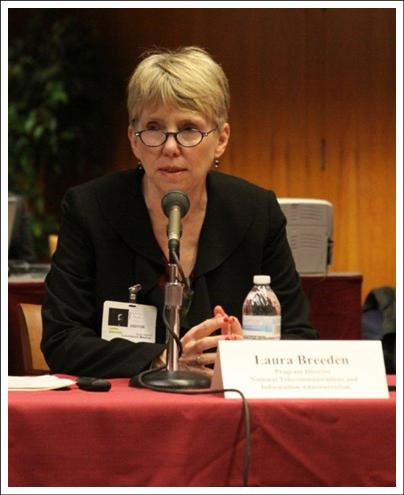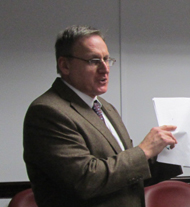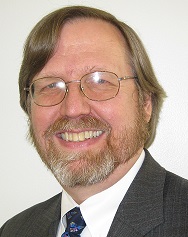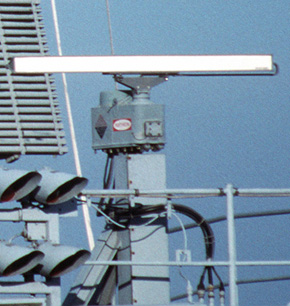NTIA Blog
Nearly Halfway to Meeting Spectrum Target
Recognizing the growing importance of wireless broadband to the U.S. economy, President Obama five years ago last week set a bold new goal aimed at ensuring that enough spectrum is available to meet the surging demand for wireless connectivity. As the President noted in a June 28, 2010 memorandum, “The world is going wireless, and we must not fall behind.” The President called on NTIA and the Federal Communications Commission (FCC) to make 500 megahertz of federal and non-federal spectrum available for commercial wireless broadband by 2020. As we move into the second half of this ten-year challenge, I wanted to take the opportunity to review the progress we have made and the hurdles still left to surmount.
Five years out, there is little debate about the accuracy of the President’s prediction – the public’s demand for wireless “smart” devices has continued to grow exponentially along with the need for spectrum to help power this technology. Nearly two-thirds of Americans now own smart phones compared to just 35 percent in 2011, according to the Pew Research Center.
Spotlight on NTIA: Laura Breeden, Director of External Affairs for BroadbandUSA, Office of Telecommunication and Information Applications
This post is part of our “Spotlight on NTIA” blog series, which is highlighting the work that NTIA employees are doing to advance NTIA’s mission of promoting broadband adoption, finding spectrum to meet the growing demand for wireless technologies, and ensuring the Internet remains an engine for innovation and economic growth.
 Laura Breeden has certainly made her mark on the digital world. While she describes herself as a “minor player,” Breeden, director of external affairs for the Office of Telecommunication and Information Applications’ Broadband USA program, has spent much of her career tracking the evolution of technology and the Internet.
Laura Breeden has certainly made her mark on the digital world. While she describes herself as a “minor player,” Breeden, director of external affairs for the Office of Telecommunication and Information Applications’ Broadband USA program, has spent much of her career tracking the evolution of technology and the Internet.
Breeden’s work in this area began in 1983 when she joined BBN, a Cambridge, Mass., high-technology research and development firm. Her project, CSNET (the Computer Science Network), was funded by the National Science Foundation to connect university and corporate computer science departments around the country and the world via ARPANET, the platform that would eventually become the modern-day Internet. She helped link research networks in Japan, Korea, France, Ireland, Denmark, Great Britain, and Germany to their counterparts in the United States.
NTIA Releases Report Furthering President's Commitment to Identifying Spectrum for Commercial Wireless Broadband
Today, the National Telecommunications and Information Administration (NTIA) released an important technical report developed by engineers in NTIA’s Office of Spectrum Management (OSM) and Institute for Telecommunication Sciences (ITS) that provides the technical analysis supporting spectrum sharing in the 3550-3650 MHz band. It serves as a concrete example of our efforts to make more spectrum available to meet the exploding demand for commercial wireless broadband while protecting mission-critical Federal systems.
The Federal Communications Commission (FCC) in April approved an innovative regulatory framework that would enable commercial access to 150 megahertz of spectrum in the 3.5 GHz band. This framework grew out of NTIA’s 2010 Fast Track Report, which identified the 3.5 GHz band as a possible candidate for spectrum sharing to fulfill the President’s goal of identifying 500 megahertz of additional spectrum for commercial wireless broadband by 2020. Federal agencies are currently using this spectrum to operate military shipborne, ground-based, and airborne radar systems.
Stakeholder Proposals to Come Together at ICANN Meeting in Argentina
Next week, hundreds of members of the Internet stakeholder community will attend the Internet Corporation for Assigned Names and Numbers’ (ICANN) 53rd meeting in Argentina. As I head to Buenos Aires, one of NTIA’s top priorities continues to be the transition of NTIA’s role related to the Internet Domain Name System. Since we announced the IANA stewardship transition in March 2014, the response of the stakeholder community has been remarkable and inspiring. I thank everyone for their hard work.
The meeting in Buenos Aires will be pivotal, as the community finalizes the components of the transition proposal and determines what remains to be done. The three stakeholder groups planning the transition of the individual IANA functions have made great progress. I congratulate the Cross Community Working Group on Naming Related Functions for finishing its draft proposal and look forward to this work stream reaching closure. The other two stakeholder groups – the Internet Engineering Task Force, which is shepherding the protocol parameter proposal, and the five Regional Internet Registries, which collaborated on the numbering proposal – finished their proposals earlier this year.
Spotlight on NTIA: Edward Drocella, Chief of Spectrum Engineering and Analysis Division, Office of Spectrum Management
This post is part of our “Spotlight on NTIA” blog series, which is highlighting the work that NTIA employees are doing to advance NTIA’s mission of promoting broadband adoption, finding spectrum to meet the growing demand for wireless technologies, and ensuring the Internet remains an engine for innovation and economic growth.
 In addition to ensuring that federal agencies have the spectrum they need to carry out important missions for the American people, NTIA’s Office of Spectrum Management in recent years has been working hard to help meet the President’s goal of making 500 megahertz of spectrum available for wireless broadband by 2020.
In addition to ensuring that federal agencies have the spectrum they need to carry out important missions for the American people, NTIA’s Office of Spectrum Management in recent years has been working hard to help meet the President’s goal of making 500 megahertz of spectrum available for wireless broadband by 2020.
Twenty Years after the Birth of the Modern Internet, U.S. Policies Continue to Help the Internet Grow and Thrive
 Yesterday, I had the great opportunity to speak at the United States Telecommunications Training Institute (USTTI) to a group of foreign government officials focused on Internet and cybersecurity issues. My talk focused on how NTIA sees the role of the Internet in the U.S. economy, and what key policies have contributed to the strength of the U.S. Internet economy.
Yesterday, I had the great opportunity to speak at the United States Telecommunications Training Institute (USTTI) to a group of foreign government officials focused on Internet and cybersecurity issues. My talk focused on how NTIA sees the role of the Internet in the U.S. economy, and what key policies have contributed to the strength of the U.S. Internet economy.
Participants included representatives from Bangladesh, Barbados, Benin, Botswana, Burkina Faso, Ecuador, Ethiopia, Ghana, Senegal, Sri Lanka, Tanzania and Uganda. The daylong course, organized by NTIA’s Office of International Affairs, introduced basic concepts in Internet policymaking and governance to build awareness, and develop and improve policymaking skills while working in a multistakeholder environment with government, civil society, industry and others. The course, which will take place again in September, examined U.S. Internet policy approaches, taking into consideration some of the key international issues and debates occurring globally.
Bringing Spectrum Sharing to a "Model City"
As we explore a bold new world of sharing spectrum across government and commercial users, NTIA is continuing the conversation about how to make this vision a reality.
NTIA and the Federal Communications this week held a two-day workshop focused on the Model City initiative, which would establish a pilot program in a major U.S. city or cities that will serve as a test bed to evaluate and demonstrate spectrum-sharing technology in a real-world urban environment. The project would be a public-private partnership launched with the support of NTIA, which manages federal uses of wireless spectrum, and the FCC, which regulates commercial use of the airwaves.
It has been nearly three years since the President’s Council of Advisors on Science and Technology (PCAST) issued a groundbreaking report laying out a bold new vision to make the most efficient use of government-held wireless spectrum and realize its full potential to spur economic growth, drive innovation and fuel the mobile broadband revolution.
Innovation, Collaboration and Sharing in the 3.5 GHz Band
In an important step toward meeting President Obama’s goal of making 500 megahertz of spectrum available for mobile broadband by 2020, the Federal Communications Commission (FCC) today approved an innovative regulatory framework that will enable access to 100 megahertz of spectrum in the 3550-3650 MHz (3.5 GHz) band. Today’s action grew out of NTIA’s October 2010 “fast track” evaluation report that identified the 3.5 GHz band as an important band to explore to help meet the 500 megahertz commitment and address surging demand for commercial wireless broadband.
NTIA’s fast track report proposed shared commercial and federal use of the 3.5 GHz band as long as geographic exclusion zones protected critical high-powered radar systems operated by the Department of Defense (DoD). However, NTIA recognized that large exclusion zones could hamper the deployment of commercial broadband services. To address this, NTIA engineers spearheaded groundbreaking analysis and modeling techniques and collaborated closely with DoD and FCC staff. This team effort resulted in significantly reduced exclusion zones, maximizing the commercial market potential for new broadband services. These results, along with a pioneering regulatory framework that relies on technical solutions to minimize the impact of these zones, are the foundation of the FCC’s new rules.
Technical Studies to Support Examination of Sharing Options in the 2900-3100 MHz Band
The Federal Government uses the 2900 - 3100 MHz band of spectrum for operating various types of radar systems that are used for safe and reliable maritime navigation and accurate weather monitoring. This band is one of the bands NTIA is considering in its effort to fulfill the President’s goal of identifying 500 megahertz of spectrum for commercial wireless broadband by 2020. Three reports released today describe a multi-year research effort performed by NTIA’s Institute for Telecommunication Sciences (ITS) and funded by the United States Coast Guard providing technical information that can be used to examine different sharing options between marine radar systems operating in the 2900 - 3100 MHz band and commercial wireless broadband systems.

Marine radar slotted array antenna (white bar) mounted on motor which spins it.
Broadband Infrastructure Case Studies Released – How Broadband Changes the Game
Over the past five years through our national broadband grant program, NTIA has seen first-hand the economic and societal impact that broadband has on communities across the country. At the Broadband Communities conference in Austin, Texas this week, NTIA’s BroadbandUSA team will share our plans to leverage that expertise by providing communities with technical assistance and field-tested ideas. I will be speaking along with my NTIA colleagues Doug Kinkoph and Anne Neville.
An important component of our on-going work with communities is to build on the lessons learned from an independent evaluation of the Broadband Technology Opportunities Program (BTOP) to make sound decisions going forward. In 2010 NTIA hired ASR Analytics, LLC to conduct a comprehensive study on the societal and economic impacts of the program. In advance of the Broadband Communities conference, NTIA is today releasing the final case studies from the evaluation. The principal author of the study, Dr. Stephen Rhody, will present and discuss the findings.
